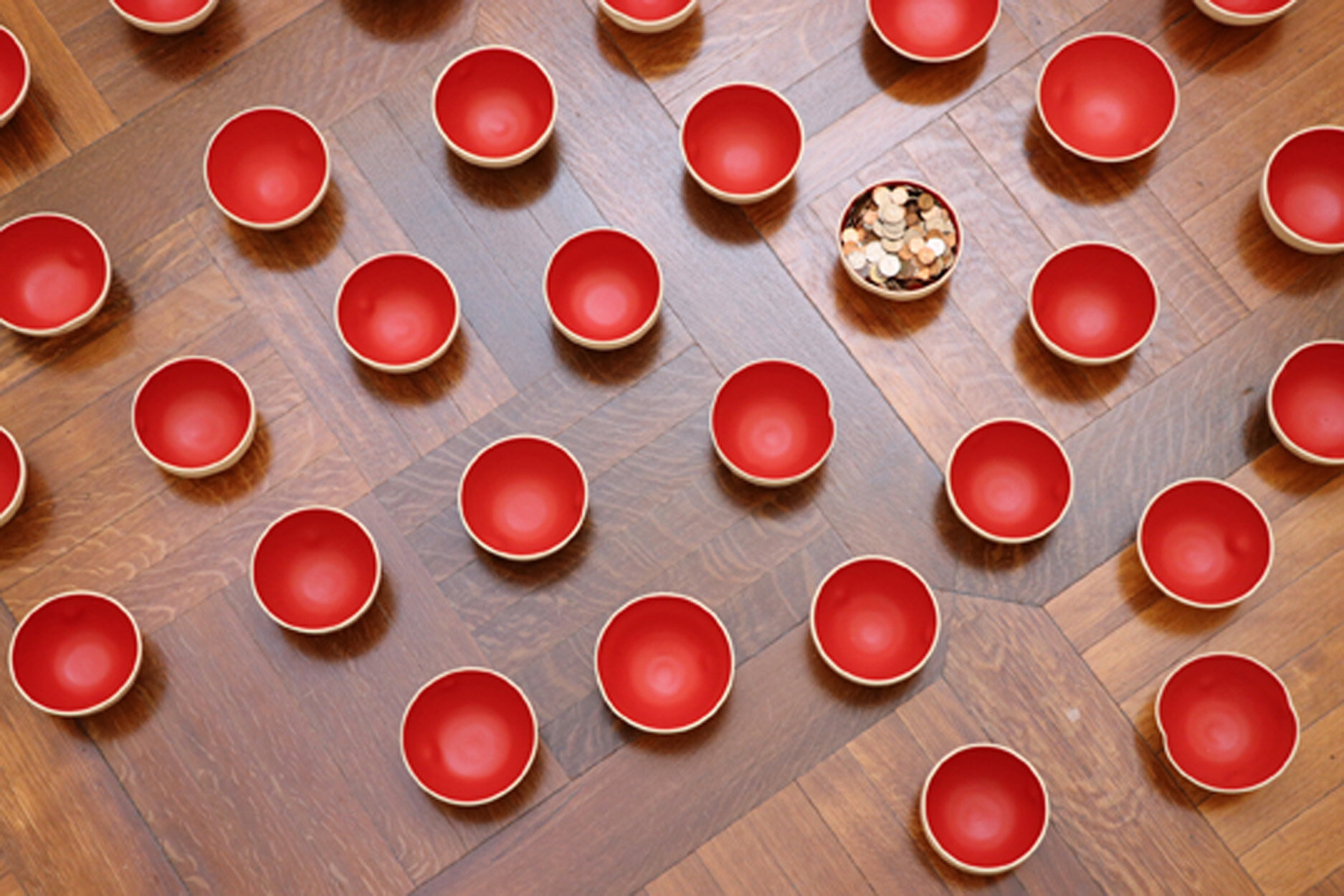Kelli Rae Adams
bio
Kelli Rae Adams utilizes clay in various states of permanency—often alongside additional materials—to create installation-based works that examine prevailing economic systems and probe our existing relationships to labor, currency and value. She has exhibited both nationally and internationally at venues such as the Corcoran School of the Arts & Design (Washington, DC), the David Winton Bell Gallery at Brown University (Providence, RI), the Wassaic Project (Wassaic, NY) and the Museum of International Ceramic Art (Denmark). She has been a fellow at the Halcyon Arts Lab (Washington, DC) and the Virginia Center for the Creative Arts (Amherst, VA) and artist-inresidence at Tlacopac International Artist Residency (Mexico), Kimmel Harding Nelson Center for the Arts (Nebraska City, NE) and Guldagergaard International Ceramic Research Center (Denmark), among others. In 2019, she served as Arts Envoy to Honduras for the US Department of State, lecturing & teaching in Tegucigalpa and jurying the XVIII Central American Sculpture and Ceramics Biennial. Her study of ceramics began in Japan, where she apprenticed over a period of five years with Tetsuro Hatabe, a master potter in the Karatsu tradition. Kelli holds an MFA in Ceramics from the Rhode Island School of Design and a BA in Visual Arts and Spanish from Duke University, and she has served as faculty at RISD.
Artist statement
In my work, I utilize media as varied as clay, concrete, food and video to create works that can be touched, eaten, heard and sometimes even broken or dissolved. These works invite those who encounter them to reflect on the realities of time, value, and labor; of vulnerability and impermanence; and of reward and sacrifice. The art is rooted firmly in direct personal experience: the bone-rattling sound of porcelain dominoes as they fall, the quiet beauty of a clay coin disintegrating in water, the sensation of wet porcelain underfoot, the exchange of participants' time and labor for my own. Through this range of activity, I encourage heightened awareness of the dynamics governing the most basic aspects of our lives, specifically the economics of human existence.
As collaborators in the activation of my installations, viewers have the opportunity to become complicit in the life story of the works. Viewing and handling, perhaps unmaking or breaking the works, visitors are given time and space to consider and assess the values of materials, their states and aesthetic forms, and the artistic labor required to produce them—each deciding for themselves what constitutes a valuable experience or exchange.
Positing currency as a technology of trust, my present research examines our existing forms of currency and systems of exchange. It probes the increasing intangibility that characterizes our transactions with entities both personal and institutional, and it considers the effects of both prevailing systems and emerging technologies on the ways we value labor and distribute resources. Through participatory artworks developed via processes of ongoing research, generative dialogue and public iteration, I highlight and interrogate the salient economic issues of our time, namely wealth inequality, the minimum wage debate and the
student debt crisis.


